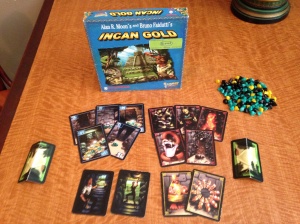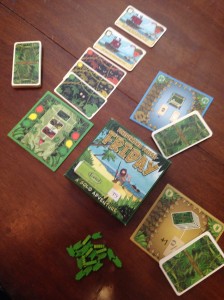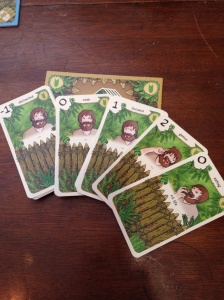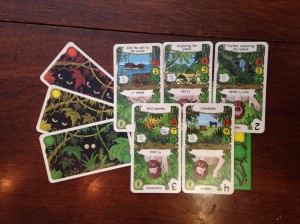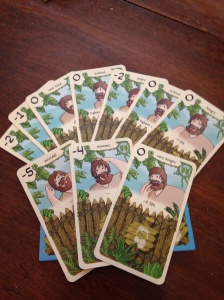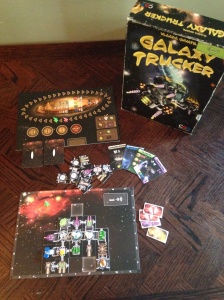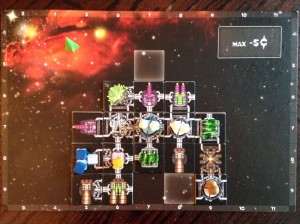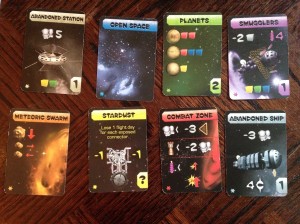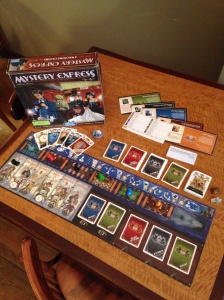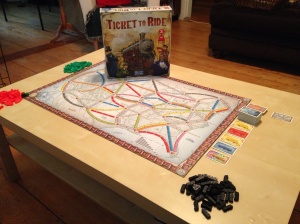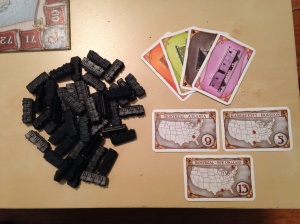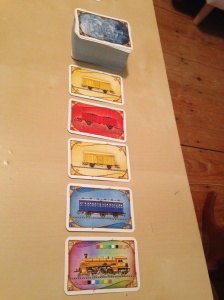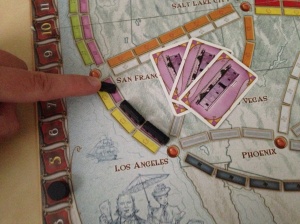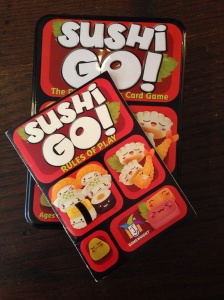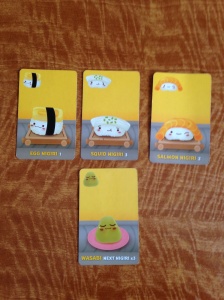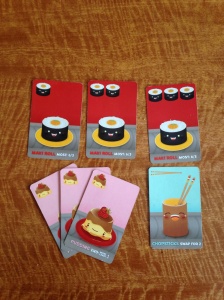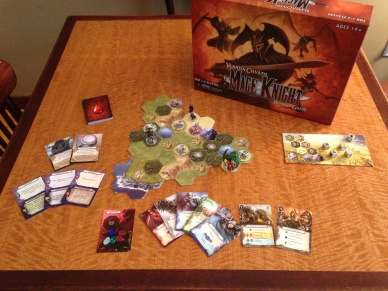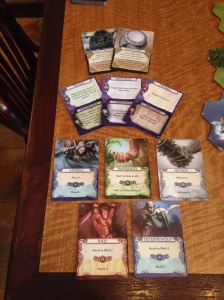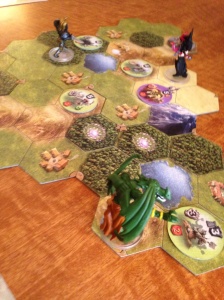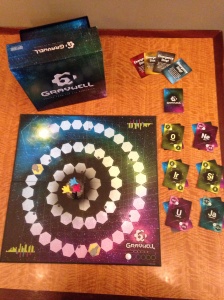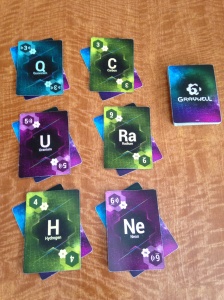So, what’s the deal with Incan Gold?
Players explore a temple rife with riches! The deeper you explore, the more gems and artifacts you can find – but with that reward comes the ever-greater likelihood that you could lose everything when it all goes horribly wrong…
What makes Incan Gold special?
Incan Gold is an excellent distillation of a game of press-your-luck. It usually remains tense throughout, and is easy to teach. Players repeatedly must make the decision whether it is better to stay or to leave, risking their accumulated treasure should they fall victim to a disaster in the temple. It is very easy to learn, plays quickly and is always exciting, and is an especially great choice for larger groups, since 2-8 can play and have fun, though I think the sweet spot is 4 or more.
Alright, so what’s the gameplay like?
The game is played in five rounds. On the first turn of each round, the top card of the deck is turned over, revealing either treasure or a hazard. If the card shows gems, then these gems are divided evenly among all players, with the remainder left behind on the card. If the card shows a hazard, don’t worry – this is just a warning of dangers to come.
Before each turn, players secretly choose to keep exploring the temple or to return to camp with their riches by selecting the corresponding card. Once all players have decided, their decisions are revealed simultaneously.
All players who choose to leave scoop up any treasure that was left behind on cards, again dividing it evenly among those leaving. Then they get to stash their treasure under their tent, where it is safe for the rest of the game.
Players who continue to explore flip the next card of the deck and, if the card shows gems, divide the gems evenly among themselves as before. If the card is a hazard, then the players may be in danger! There are five different types of hazards, with three cards of each in the deck. The first time any hazard appears, it is just a warning – but the second time a hazard appears, the players must drop all of their carried riches to immediately escape the temple with nothing but their lives!
A round ends when either all players have chosen to leave the temple, or when the players are chased out by a hazard. If the players are chased out by a hazard, remove one of that hazard card from the game before shuffling the deck for the next round.
After five rounds, whoever has the biggest stash is the winner!
One part I didn’t mention here are the artifact cards – each round, one artifact is added to the deck. Artifacts are worth a lot – 5 or 10 gems each – but unlike piles of gems, cannot be shared equally. To claim an artifact, a player must choose to leave the temple and be the only one to leave the temple on that turn – only then can they pick up the artifact on the way out.
I think I get it. Who do you recommend this game to?
I’ve seen all types of groups enjoy Incan Gold, so I think the best way to enjoy Incan Gold is to come in with the proper mindset. This is not a deep thinking game at all, so anyone in the mood to develop strategies will surely be disappointed. However, what the game offers, it delivers on very well. Outside of casino gambling, I haven’t seen so much excitement over one turn of a card in any other game. Incan Gold is great for any group that is in the mood for some light fun without too much thinking, and where big risks can pay off.
To Summarize:
Players: 2-8
Time: 15-20 minutes
Strategy: 1
Luck: 5
Complexity: 1
Game Elements: Press-your-luck
